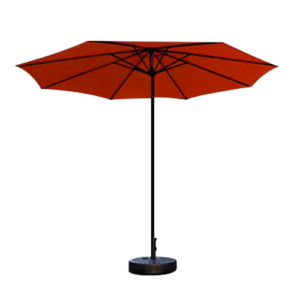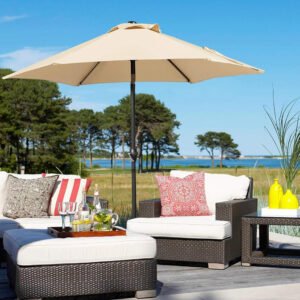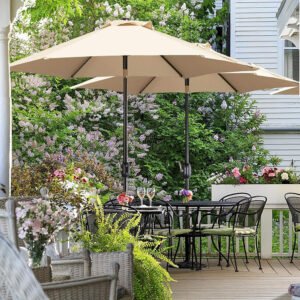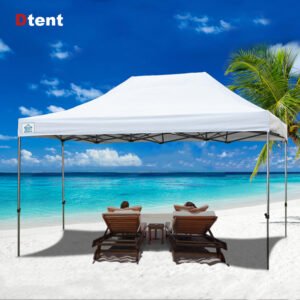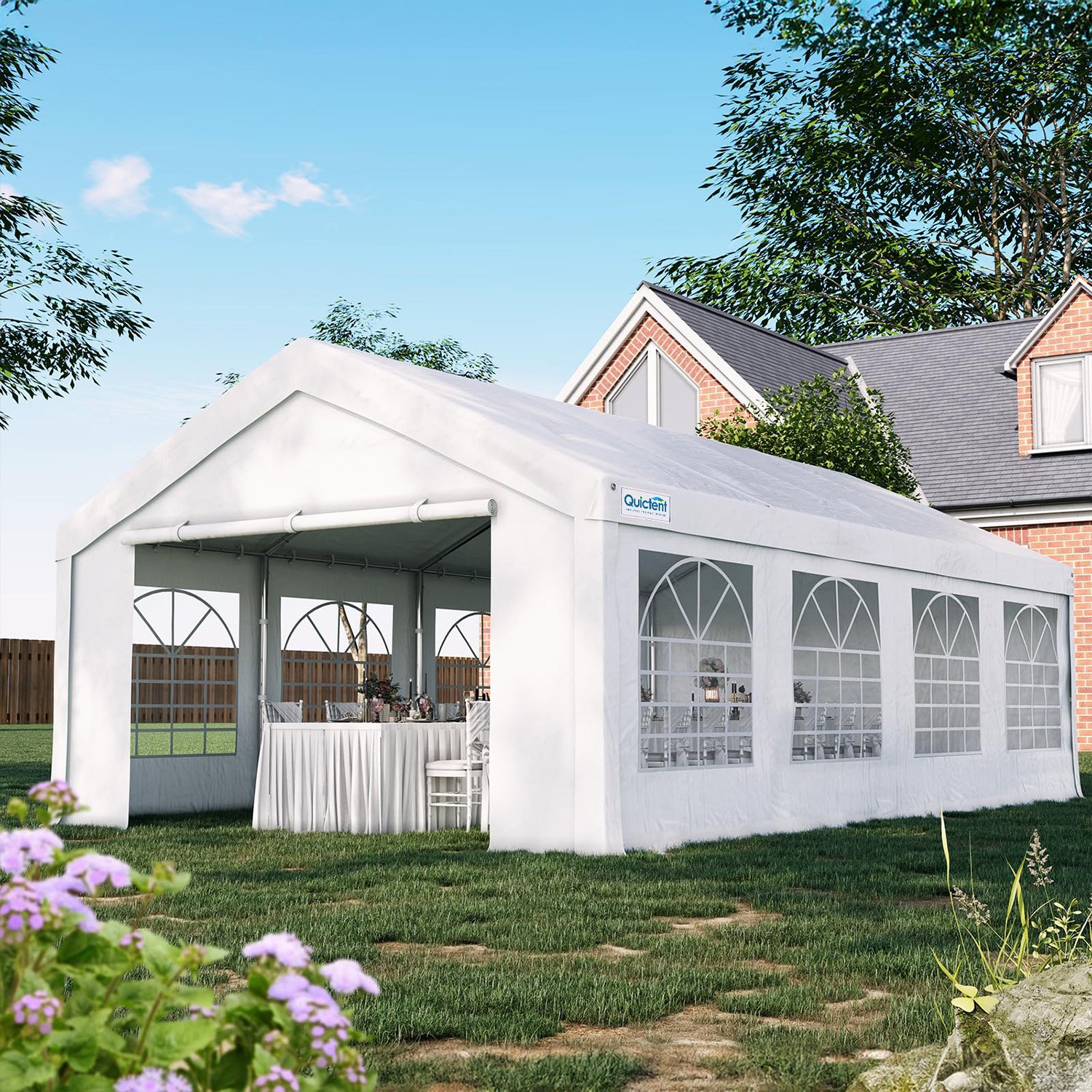Last Updated on 01/22/2025 by dtent.net
In a sunny outdoor garden, an exquisite Garden Parasol (gardening parasol) can not only provide people with necessary sun protection, but also add elegance and fashion to the entire garden. As one of the representatives of outdoor sunshade products, Garden Parasol’s unique design, diverse functions and wide range of application scenarios make it an indispensable outdoor decorative element in modern families. This article will explore the historical origins, design features, material selection, application scenarios, and maintenance and care methods of Garden Parasol in depth, giving you a comprehensive understanding of this elegant choice for outdoor sunshade.
1. Historical Origin of Garden Parasol
The history of Garden Parasol can be traced back to the ancient civilization period. As early as the ancient Egyptian, Greek and Roman periods, people began to use parasols to block the sun and protect their skin from ultraviolet rays. Over time, parasols gradually evolved from practical tools to fashion accessories, becoming a symbol of identity and status for nobles and wealthy people. In the 19th century, with the rise of European garden art, Garden Parasol began to be widely used in gardens as an outdoor sunshade, and gradually developed into a gardening decoration with a unique design style and rich cultural connotations.
2. Design features of Garden Parasol
The design features of Garden Parasol are mainly reflected in the following aspects:
1. Elegant umbrella structure
The umbrella structure of Garden Parasol is one of its most significant design features. The elegant umbrella curve and smooth umbrella rib lines combine to form a unique visual beauty. The size, shape and color of the umbrella can be selected according to personal preferences and garden style to meet the needs and aesthetic preferences of different users.
2. Diverse material selection
The material selection of Garden Parasol is also one of its design features. The umbrella is usually made of sun-proof and waterproof synthetic fibers or natural fabrics to ensure durability and practicality in outdoor environments. Umbrella ribs are mostly made of lightweight, sturdy metal materials or composite materials to support the weight of the umbrella and resist the invasion of wind and rain. In addition, the handle and base of the Garden Parasol can also be selected and designed according to user needs and garden style.
3. Practical functional design
Garden Parasol not only has the function of sunshade, but also can be designed with multiple functions according to user needs. For example, some Garden Parasols are equipped with lighting systems to provide soft lighting for the garden at night; some are equipped with fan systems to bring cool air to people in the hot summer. These practical functional designs make Garden Parasol more practical and convenient in outdoor environments.
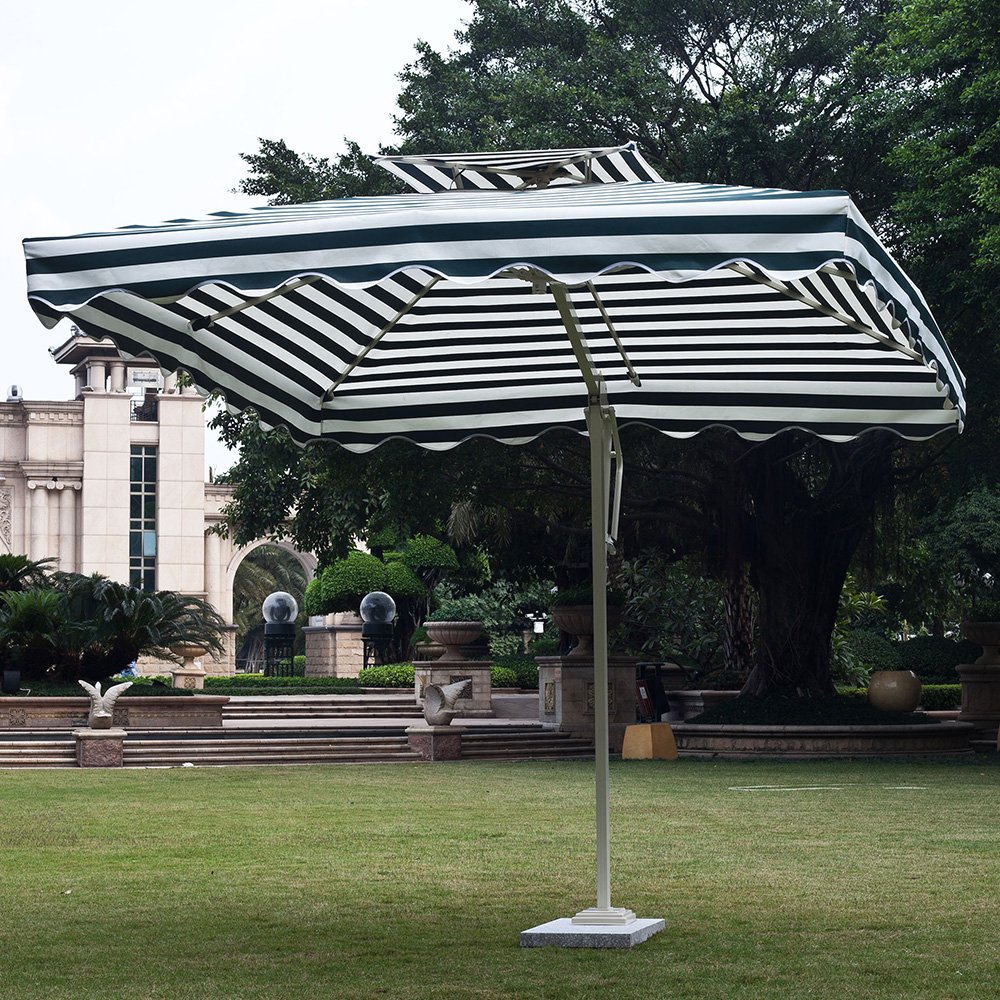



3. Material selection of Garden Parasol
The material selection of Garden Parasol has an important impact on its performance and service life. The following are some common Garden Parasol materials and their characteristics:
1. Umbrella material
Synthetic fiber: such as polyester fiber, nylon, etc., has the characteristics of sun protection, waterproof and durability, and is suitable for outdoor environment.
Natural fabrics: such as cotton, linen, silk, etc., have good breathability and touch, but the sun protection and waterproof performance are relatively poor, and regular maintenance is required.
2. Umbrella rib material
Metal materials: such as aluminum alloy, stainless steel, etc., are lightweight, strong and corrosion-resistant, and are suitable for making large Garden Parasol ribs.
Composite materials: such as carbon fiber, glass fiber, etc., are lightweight and high-strength, and are suitable for making small or portable Garden Parasol ribs.
3. Umbrella handle and base material
Wood: has a natural and warm appearance and feel, but requires regular maintenance to prevent decay and cracking.
Metal: such as iron art, cast aluminum, etc., are strong and durable, but are heavy and easy to rust.
Plastic: It is lightweight and waterproof, but its durability is relatively poor.
4.Application scenarios of Garden Parasol
Garden Parasol, as an outdoor sunshade product, is widely used in various outdoor scenes. The following are some typical application scenarios:
1. Private garden
In a private garden, Garden Parasol can provide people with a place to rest in the sun and escape the heat. Whether it is a family gathering, a drink with friends or reading alone, a delicate Garden Parasol can bring you a comfortable and pleasant experience.
2. Public green space
In public green spaces such as parks and squares, Garden Parasol can provide shade and protection for tourists. Some large Garden Parasols can even be equipped with seats and tables to form a complete outdoor leisure area for people to rest and have fun.
3. Beach vacation
Garden Parasol is also an indispensable sunshade when on a beach vacation. It not only provides shade and protection for people, but also serves as a fashionable accessory to add elegance and fashion to your beach vacation.
4. Camping and picnic
Garden Parasol can also play an important role when camping and picnic. It can provide a place for your campsite to shade and shelter from the rain, protecting your equipment and food from wind and rain.
-
Rated 0 out of 5
-
Rated 0 out of 5
-
Rated 0 out of 5
-
Rated 0 out of 5
5. Maintenance and maintenance methods of Garden Parasol
In order to ensure the long-term use and beauty of Garden Parasol, regular maintenance and maintenance are required. The following are some common maintenance and maintenance methods:
1. Clean the umbrella
Regular cleaning of the umbrella is the key to maintaining the beauty of Garden Parasol. Use a soft brush or damp cloth to gently wipe the dust and dirt off the surface of the umbrella. For stubborn stains, use mild detergent and water to clean, but be careful to avoid using bleach or corrosive substances such as strong acids and alkalis.
2. Check the ribs and handles
Regularly check the ribs and handles for damage or looseness. If you find problems such as bent, broken ribs or loose handles, you need to repair or replace them in time to avoid safety accidents.
3. Storage precautions
When the Garden Parasol is not in use, it needs to be stored in a dry, ventilated place to avoid moisture and mildew. If it is not used for a long time, it is recommended to fold the umbrella and store it in a storage bag to extend its service life.
4. Avoid bad weather
In bad weather conditions (such as strong winds, heavy rains, etc.), it is recommended to put away the Garden Parasol to avoid damage. If you must use it, you can choose a Garden Parasol with stronger wind resistance or take additional fixing measures to ensure safety.
Choose right garden parasol
As an outdoor sunshade, Garden Parasol not only has practical functionality, but also has elegant design and rich cultural connotations. By choosing the right material and design style, Garden Parasol can add comfort and pleasure to your outdoor life. At the same time, regular maintenance and care are also the key to ensure the long-term use and beauty of Garden Parasol. In the future, as people’s requirements for outdoor life quality continue to improve and technology continues to advance, Garden Parasol will continue to develop and innovate to meet a wider range of needs and application scenarios. Let us cherish and protect these elegant sunshades while enjoying outdoor life!


